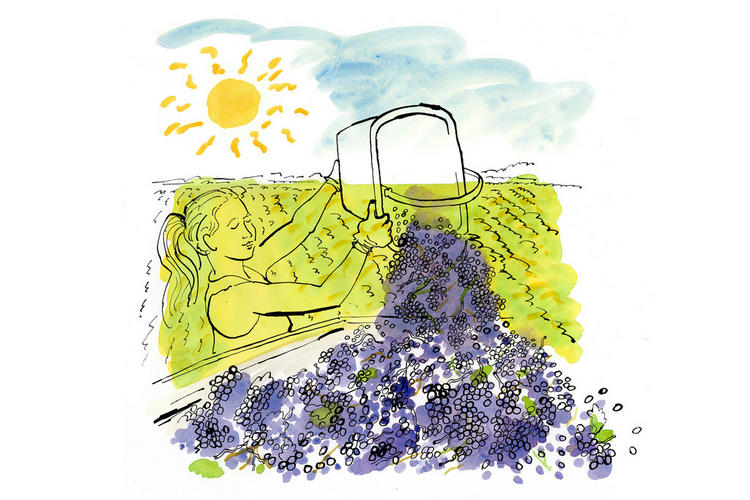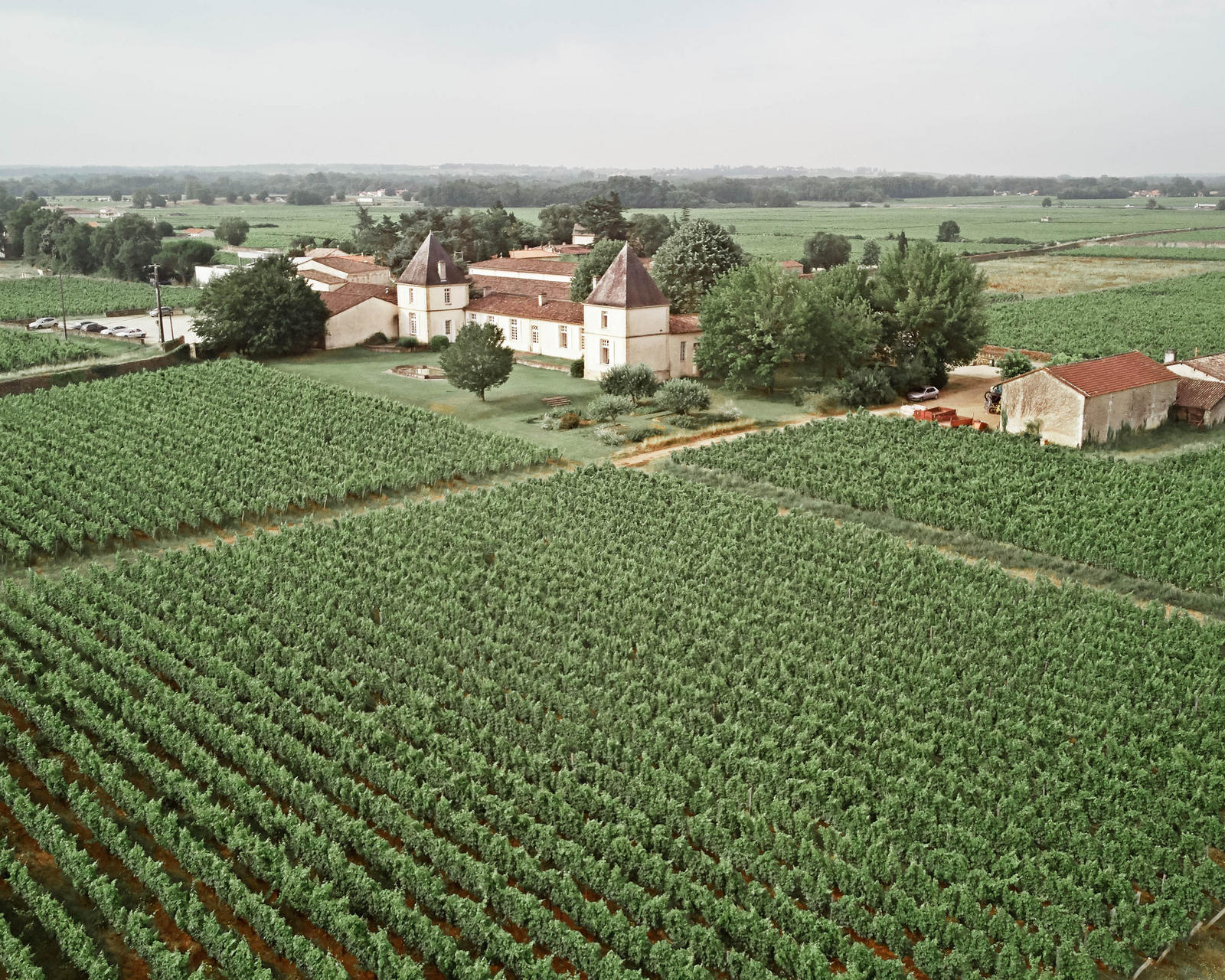Home > Editorial > Bordeaux 2022: Feeling the heat
Bordeaux 2022: Feeling the heat
Published: 5th May 2023
SEVEN-MINUTE READ
Summers in Bordeaux are getting hotter, fast. The increasing heat has a huge impact on both the growing grapes and the finished wines. Here, Barbara Drew MW explores what winemakers can do to mitigate the eff ects of excess heat
In 2021 the French government declared an agricultural disaster after the worst frosts in 40 years. They’d already run out of expletives by the time forest fires nudged the outskirts of Bordeaux in 2022, on days when the temperature peaked over 40 degrees Celsius.
SPRING FROSTS
Hot growing seasons come in many forms: prolonged warm spells; a handful of intense heat days; temperatures that stay too high well into the start of autumn. In all such cases, sugar levels in the grapes tend to rise rapidly. At the same time, the acids in the grapes degrade – particularly in the absence of cool night-time temperatures. Fortunately, nights were cool enough in 2022 for the grapes to retain some acidity: “The nights weren’t exactly cold, but they were under 20 degrees Celsius, allowing the plant to breathe,” Frédéric Faye of Château Figeac explained to us. But in many hot vintages that is not the case.
The logical step to counter this is to pick grapes earlier, but the picture is complex. Tannins need time to ripen, and heat does not accelerate this process as much. So it is possible for a grape to have unripe tannins, which are chewy, stalky and bitter, despite the sugar and acid levels indicating it should be picked with extreme haste. Those who leave their grapes on the vine, aiming for ripe tannins, can end up with heavy, alcoholic wines, lacking in finesse or, indeed, ageing ability. Yet those who pick too early can achieve moderate alcohol and balancing acidity, at the cost of unripe flavours or stalky tannins. It is a circle that seems impossible to square.
In previous decades, extreme heat has been a rare problem. A warm summer was almost always punctuated by periods of rain, or cool weather, interrupting the gentle ripening process and holding back the accumulation of sugar in the grapes. And in those rare years where temperatures soared, it was invariably for a limited period. Now, grape growers and winemakers are having to consider how to manage increasing temperatures while still making balanced wines. Thankfully, today’s winemakers have a better understanding of how vines grow and how grapes ripen. This, along with innovations in the winery, means they have more tools at their disposal than in the past.
Managing heat in the vineyards

Creating a balanced wine very much starts in the vineyard. And the decisions producers take here can have a huge influence on the overall style of the wine produced. As understanding of how the vine responds to heat and water stress improves, producers will be able to fine-tune their interventions even more.
ENCOURAGE NATURAL SHADE
Vines are creepers. They tend to produce an astonishing quantity of green growth: shoots, tendrils and leaves. Many wineries remove a lot of this greenery as the grapes start to ripen, stripping leaves away from the fruiting zone to let sunlight in at the grapes. By reducing these operations, the vine’s own leaves can shade the grapes and prevent rapid overripening.
PLANT COVER CROPS
More Bordeaux wineries are planting extensive cover crops in the vineyards. This has been an important development at Château Cheval Blanc in recent years and is an increasingly common sight around the region. These plants, varying from grasses to clovers and mustard, planted between the vines, change the vineyard environment, moderating air temperatures slightly, and competing with the vine, resulting in grapes with slightly lower sugar levels. In addition, such cover crops not only help to stabilise the soil but also increase biodiversity in the vineyards, providing food and cover for insects.
REORIENTATION OF VINEYARDS
In the northern hemisphere, many vineyards are planted north to south, allowing the vines to benefit from the sun throughout much of the day. Changing the orientation of rows, sometimes combined with a higher canopy, will result in the vines being in shade for more hours during the day. This can have a significant impact on temperatures in the canopy and slow down the ripening process. However, this is a significant change and can only be implemented when replanting areas of the vineyard.
PLANT DIFFERENT VINES
Many properties are experimenting with different clones of Cabernet Sauvignon and Merlot. Different clones of the same grape variety will display subtle differences in how they respond to heat, with some retaining more acidity, or ripening more slowly than others. Of course, broader changes are also afoot. In 2021, regulations in Bordeaux were changed to allow a wider variety of grapes to be planted, from Touriga Nacional to Arinarnoa. These grapes are far better suited to the increasingly warm climate the region will experience in years to come. This change currently only applies to the standard Bordeaux appellation – so the Grands Crus Classés are unaff ected. It will be quite some decades indeed (if ever) before we see a 100% Touriga Nacional Fifth Growth. Nevertheless, the change is indicative of a more lateral approach to solving the problem of warming summers in the region.
WEATHER FORECASTING
Pretty much the only thing producers can’t do with all the technological improvements we’ve seen over the past decades is predict the weather. Long-range weather forecasts are notoriously unreliable. And while it’s possible to get a very general sense of what’s on the horizon, predicting exact temperatures over the crucial four-to-six-week ripening period before harvest is still difficult.
Changes in the winery

Picking the grapes when the sugar, acidity and tannins are all in perfect balance is any winemaker’s dream, and is how most Bordelais are choosing to manage this problem. Ultimately, if your ingredients are not right, it is difficult to create the very best wine.
There are, however, options in the winery for producers with grapes which have been harvested overly ripe. These range from adding some tartaric acid (one of the natural acids found in grapes) to the juice before fermentation; to large-scale interventions such as reverse osmosis or a spinning cone – which can ultimately remove some of the alcohol from a wine.
These can be useful tools, though they’re rarely used at top estates. Most winemakers prefer to manage problems in the vineyard where possible, aiming for a more hands-off approach in the winery itself. Such winery technologies have proven effective at producing low- and no-alcohol wines in other regions of the world though, and it may be that their uses become even broader as we face a warmer future.
The way forward
As summers continue to be hotter than before, the wines of Bordeaux – as in so many other classic regions – will change. They have already changed immeasurably in the past 30 years, with the 12%-alcohol wines of the 1980s all but vanished today. It would be a harsh critic indeed who would compare a weedy 1986 Left Bank wine with one from 2016 and declare it the better of the two. Personal preferences aside, wines in Bordeaux have become objectively better over the past three decades.
But they have also changed in style. This is the result of many different factors, climate change and technology being two of them. The wines will continue to change – in some properties more rapidly, in others a little more slowly – as winemakers seek to grapple with the turning up of the heat.
LOOKING AHEAD
It is often said that to make a small fortune from a vineyard, one must start with a large fortune. As weather patterns change rapidly, and vignerons deal with severe frosts every year, even this bleak outlook is starting to seem optimistic.
For those producers setting up new vineyards, or looking to future-proof current vineyards, serious consideration needs to be given to built-in frost protection. Some producers may also prefer to select their grape varieties with this threat in mind, choosing those which are less susceptible to frost damage. And some, sadly, will decide this, combined with increasing droughts and heat spikes, is an insurmountable challenge. As further spring frosts bite, we will see more growers leave the wine industry altogether.





